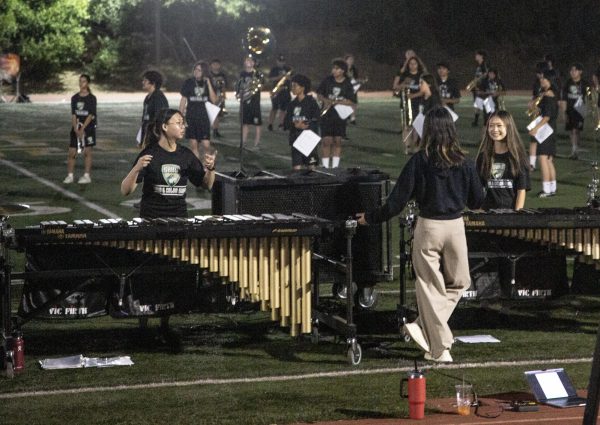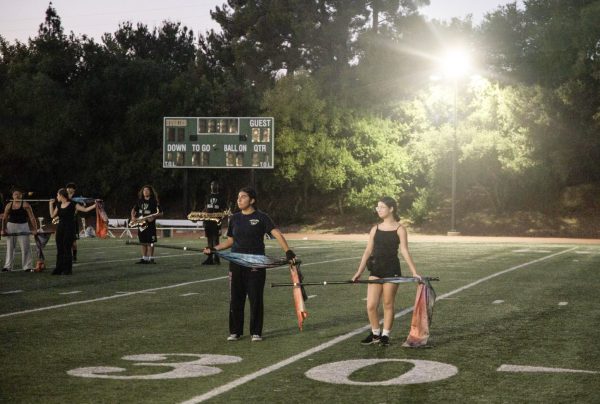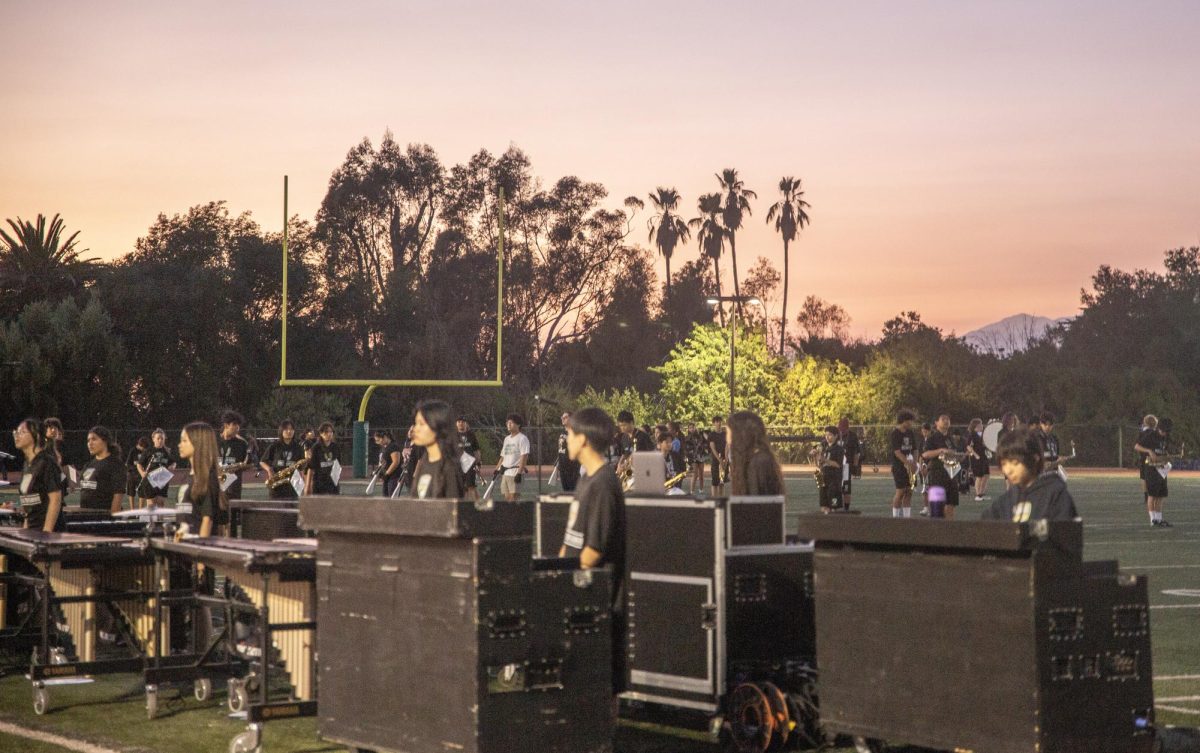Ever wondered what happens behind the scenes of every song, dance, and performance on the field? Marching band and color guard members pour countless hours into creating a show you won’t forget.
Marching band and color guard students have separate sectional lessons but share the same practice schedule. Daniel Haro Ruiz (10), a trombone player, described their rehearsal schedule during the school year to be every Monday, Wednesday, and Saturday from 5 to 8 p.m. Ruiz has taken band since freshman year, and has been dedicated to it since the sixth grade.
“If you combine your schedule with other things, it might be [stressful,] but if you schedule everything right, you can find time [for yourself]. The only thing is, you’re [going] to be tired,” Ruiz said.
Keena Weigel, a senior returner in color guard, described how she spent her summer dedicated to color guard and the scheduling challenges she faced. Color guard members not only have long practice hours, but also spend much time doing tournaments.
“Saturday’s competition season’s going to start up, and that ranges from [7 to 11 a.m.] and usually goes [to] at least 10 [p.m.], so it [can take about] 12 hours. Then over the summer we have band camp, which is a lot more rigorous. I think it’s very, very demanding,” Weigel said.
Jaclyn Cao (11), marimba player in the front ensemble, described her own experience as a full-time musician and student. Balancing band, academics, and extracurriculars was a major challenge for her, especially with the AP and Honors classes she had to juggle.
“It was overwhelming at first, but [band] taught me how to manage time and the importance of asking others for help. It helped me grow more as a musician and a leader,” Cao said. “I feel like teachers don’t really understand how [time consuming] band is. It takes a lot of time to learn the music and for each section to bring it together. It’s a process, a long process.”

In addition to color guard, Weigel managed the demands of AP classes while also competing on the tennis team last year.
“Last year, I played tennis. Tennis practice ends at 5, color guard practice starts at 5. I got totally drained from that, but I don’t regret [it]. [This year, due to] our seniority, our coaches give us more responsibilities to choreograph on our own [and] figure things [out] on our own. [It can be] frustrating because we don’t know any more than anyone else, but I think it’s for us to grow and prepare for [future] situations,” Weigel said.
Ruiz reflected on a major obstacle he struggled to overcome as a perfectionistic musician.
“I [would] take everything too seriously. I kind of had panic attacks whenever I did something wrong. You’re always going to make mistakes, but I [would] take them too [seriously],” Ruiz said.
Katherine Ramos (9), who just started color guard three months ago, shared what it has done for her so far.
“I never considered myself to be a dancer, [and in color guard] you have to dance, so now I [can] dance. I enjoy color guard a lot, and honestly, I can’t imagine my life without it. It brings a light [to my day because] if I have a bad day at school, I’ll know, ‘okay, at least I have this one fun thing to do,”Ramos said.

“I’ve realized recently that I’m more artistically inclined, and color guard was a huge part of that. We are putting on a show for someone, and it is my job to be executing that properly. I [also] never considered myself [a good dancer], but last year I [realized,] ‘oh, shoot, I’m doing art.’ So I think [color guard] really helped me find that in myself,” Weigel said.







